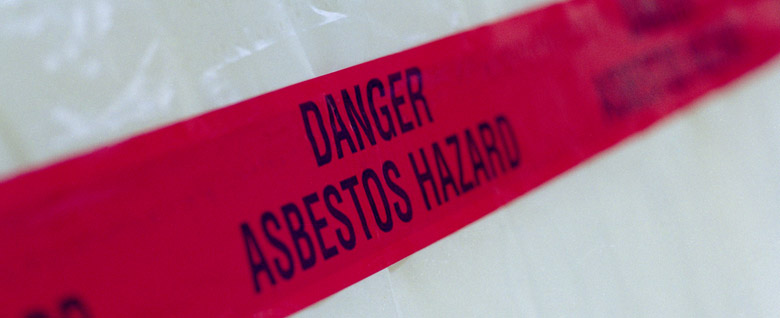Tens of thousands of council buildings in England contain potentially dangerous asbestos, new research has revealed.
Freedom of Information requests submitted by Stephensons show that more than 30,000 buildings owned or run by councils in England contain asbestos.
Stephensons sent requests to all 333 councils in England and of the 253 that did respond with the total number of buildings that contain asbestos, every single one owned or managed a building with the substance present.
The total, in figures analysed by Stephensons came to 31,030. While the majority of councils did respond, some refused or said they were unable to respond, meaning the actual figure could be much higher.
Danielle Callaway, partner in the personal injury department at Stephensons, said: “I’m sure many people will be shocked to see the levels of asbestos in public buildings that our research has uncovered.
“While the risk to people working in these buildings day to day may be low, even placing a pin into a wall containing asbestos can disturb it and lead to dust being released. For maintenance workers who may come into contact with the material as part of their job, asbestos exposure risks will be much higher.
“Asbestos is often known as the ‘hidden killer’ as we cannot see or smell the fibres in the air and the effects of exposure can take many years to materialise. Asbestos exposure can cause various, potentially fatal, lung diseases, including lung cancer and mesothelioma.”
Stephensons is now calling for an open register so council workers have the full facts before going to work in buildings that contain asbestos.
Councils are also being urged to accelerate the removal of asbestos from buildings.
Asbestos was banned in 1999 but had been routinely used during construction in decades gone by. The material was commonly installed in public buildings during the 1940s-1970s and is now often in a deteriorating state.
Problem buildings with damaged roofs, rotten windows and broken ceiling tiles can result in asbestos fibres being released into the air. If inhaled, the fibres can cause a range of life-threatening asbestos related illnesses including asbestosis, lung cancer and mesothelioma.
Stephensons’ research highlights a wide range of buildings were reported to contain the substance, including major town halls and offices and buildings regularly accessed by the public such as swimming pools, libraries and even public toilets.
Dozens of public toilets were also found to contain asbestos in the research, and as these are commonly targeted by vandals damaging or even setting fire to them, both the public and the people that deal with the fire and its aftermath could be put at risk.
Danielle Callaway added: “We are calling for an open register which would allow workers to take precautions in buildings they know contain asbestos and also for councils to look at how they can accelerate the removal of the substance.
“Many public toilets were found to contain asbestos and while this presents a very low risk to people who use them, we often see cases where these are targeted by vandals setting them on fire. This could easily lead to dust being released exposing the public and also emergency service responders who are dealing with the fire and its aftermath.
“It’s important to recognise that that many of the buildings were constructed when it was completely legal to use asbestos and it is welcome to see that the vast majority of councils have a firm grip on controlling the asbestos in their buildings through good asbestos risk management plans.”
Liz Darlison, CEO of Mesothelioma UK, said: “It’s vital that we protect people from asbestos and these figures show that local authorities around the country could be doing much more to do so.
“The only real way we can do this is by ridding these buildings of this cancer-causing substance for the good of people working in these buildings now and in the future. This is why we call for the phased removal of asbestos from all buildings in line with international best practice.
“Council workers have dedicated themselves during the pandemic to serving their communities and working hard to keep them safe from coronavirus and now action needs to be taken to make sure they are safe when they go into work.”
Mesothelioma
Mesothelioma is caused by airborne asbestos fibres being inhaled and getting into a person’s lungs. The fibres can lodge into the pleura (lining of the lungs) which causes inflammation and scarring. Over time, the damage affects the DNA of cells and can cause mesothelioma cancer. Often it is not diagnosed until many years later.
Warning signs of pleural mesothelioma
- Chest pain
- Shortness of breath
- Tiredness (fatigue)
- Sweating and high temperatures
- A persistent cough
- Losing weight when not dieting
- Loss of appetite
- Difficulty swallowing
- A hoarse or husky voice
- Changes in the shape of fingers and nails
When to see your doctor
You should see your doctor if you have the above symptoms. Particularly if you know you have been exposed to asbestos in the past.
Your symptoms are unlikely to be cancer but it's important to get them checked by a doctor. The earlier a cancer is picked up, the easier it is to treat it and the more likely the treatment is to be successful.
If you believe that you have become unwell due to asbestos exposure our industrial disease solicitors may be able to help you to claim compensation. To speak to a member of our team please call us on 0161 696 6235.


